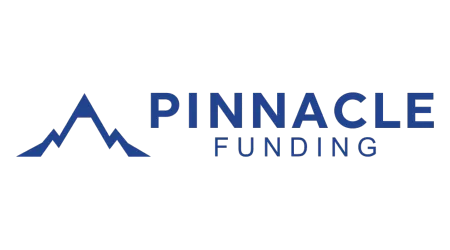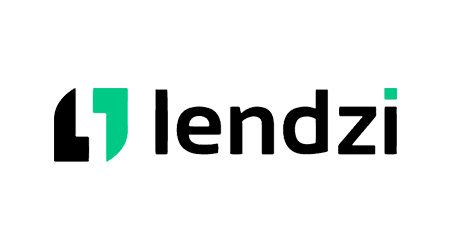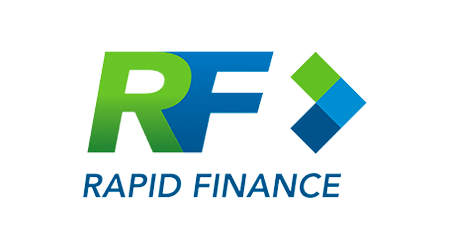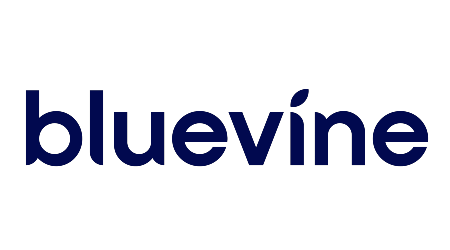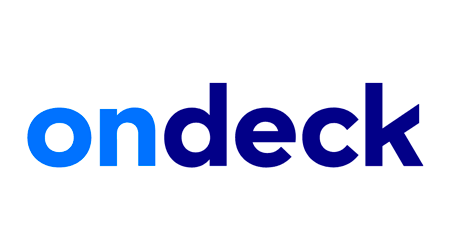A small business line of credit (LOC) gives your business access to the on-demand funds it needs to grow or cover cash flow gaps and everyday expenses. More flexible than a small business loan and usually less expensive than a credit card, LOCs are a great way to make sure you’re prepared for whatever unexpected short-term costs come your way.
Best small business lines of credit
- Best for comparing lenders: Lendzi
- Best for fast access to funds: Rapid Finance
- Best for minimal fees: Bluevine
- Best for multiple LOC options: U.S. Bank
- Best for fair credit: OnDeck
- Best for larger credit lines: Clarify Capital
Best for comparing lenders
Lendzi is a highly rated business loans marketplace with more than 60 lending partners. It allows you to check rates and terms from multiple lenders that offer business lines of credit to find the best deal for your situation. While it doesn't reveal specific requirements to qualify for business loans, it doesn't have a minimum credit score requirement, so there are solutions for borrowers with less-than-perfect credit. It also offers the potential for fast funding and the opportunity to talk to a loan specialist — rather than applying online — if you need someone to guide you through your options.
| Loan amount | $2,000 to $250,000 |
|---|---|
| APR | Starts at 6.20% |
| Min. Credit Score | 580 |
| Loan amount | $2,000 to $250,000 |
|---|---|
| APR | Starts at 6.20% |
| Min. Credit Score | 580 |
Best for fast access to funds
Rapid Finance automatically provides a prepaid Mastercard to eligible customers who have a small business line of credit with the company. This gives borrowers almost instant access to funds without having to wait for ACH withdrawals to go through, which can take up to three business days. Rapid Finance offers LOCs up to $250,000 with loan terms of three to 18 months. But it doesn't list the rates or fees on its website, and it may require weekly or daily repayments in some cases.
| Loan amount | $5,001 to $250,000 |
|---|---|
| APR | Undisclosed |
| Loan amount | $5,001 to $250,000 |
|---|---|
| APR | Undisclosed |
Best for minimal fees
One of the drawbacks to a business line of credit is that it often comes with more fees than other loan options. But Bluevine's LOC doesn't charge many of the common fees, such as setup, subscription, maintenance and termination fees. It also offers low rates, starting at 7.8% on credit lines up to $250,000, and funding is possible within 24 hours. But it charges draw fees and only accepts LLCs and corporations. You'll also need to be in business for at least a year and have a credit score of 625 or more.
| Loan amount | Up to $250,000 |
|---|---|
| APR | As low as 7.8% |
| Min. Credit Score | 625 |
| Loan amount | Up to $250,000 |
|---|---|
| APR | As low as 7.8% |
| Min. Credit Score | 625 |
Best for multiple LOC options
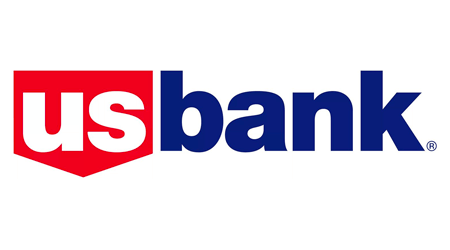
U.S. Bank offers unsecured Cash Flow Manager LOCs up to $100,000 and secured lines up to $250,000, and it waives the annual fee if your credit limit is more than $50,000. You may also want to consider its Reserve Line for up to $5,000 in overdraft protection on your U.S. Bank business checking account, which can make for a handy emergency fund. But its lowest LOC is for $10,000 — which is higher than some — and it doesn't disclose rates and terms on its website. Plus, it may offer larger credit limits, but you'll need to make an appointment to find out more.
| Loan amount | $10,000 to $250,000 |
|---|---|
| APR | Prime + 3.49% to prime + 6.49% |
| Loan amount | $10,000 to $250,000 |
|---|---|
| APR | Prime + 3.49% to prime + 6.49% |
Best for fair credit
OnDeck only requires a 625 credit score to qualify for a business line of credit, which is lower than some of its competitors. It's also open to companies with only one year in business and revenues as low as $100,000 annually. Its credit limits range from $6,000 to $200,000, with flexible loan terms from 12 to 24 months. But it may require a minimum draw at origination, its average rate is 57.1% and its highest loan amount is lower than much of the competition.
| Loan amount | $6,000 to $200,000 |
|---|---|
| APR | 35.9% |
| Min. Credit Score | 625 |
| Loan amount | $6,000 to $200,000 |
|---|---|
| APR | 35.9% |
| Min. Credit Score | 625 |
Best for larger credit lines
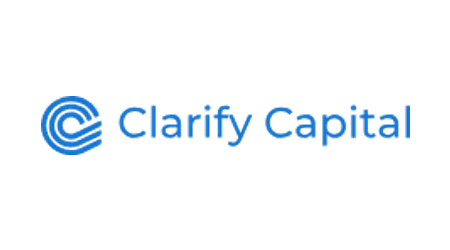
While most lenders that offer LOCs top out at $250,000 to $500,000, Clarify Capital offers business lines of credit up to $5 million through its lending partners. Rates start as low as 5%, and it offers loan terms from six to 18 months. It also considers borrowers with credit scores as low as 550, and you only need six months in business, although you'll likely need better qualifications to qualify for the best rates and terms. Plus, it doesn't disclose additional fees, which are common for business LOCs.
| Loan amount | Up to $5 million |
|---|---|
| APR | As low as 5% |
| Min. Credit Score | 550 |
| Loan amount | Up to $5 million |
|---|---|
| APR | As low as 5% |
| Min. Credit Score | 550 |
Methodology: How we chose these lenders
Finder’s business loan experts analyzed dozens of lenders that provide small business lines of credit. We ultimately chose lenders that offer fast funding, competitive rates and terms, a variety of loan amounts and those that consider borrowers with a range of credit scores, annual revenues and time in business.
Some of the criteria we evaluate include:
- Interest rates
- Additional fees
- Loan amounts
- Loan terms
- Repayment plans
- Turnaround times
- Credit score requirements
- Time in business requirements
- Revenue requirements
- Reputation of the lender
- Better Business Bureau and Trustpilot reviews
Finder also maintains strict editorial integrity and independence. Our content and suggestions are fair, accurate and trustworthy, and our advertisers or partners don’t influence our opinions. To learn more, check out our editorial guidelines here.
How to compare small business lines of credit
Consider these factors when choosing the best business line of credit for your company:
- Rates. Interest rates vary for business lines of credit. Be sure to compare multiple lenders to find the most competitive rates.
- Fees. Business lines of credit typically charge fees on top of interest, including annual, maintenance and draw fees, among others. To save money on your LOC, look for lenders that have minimal fees.
- Lender requirements. LOC lenders typically have minimum credit score, revenue and time in business requirements. Check to see if you meet the criteria before you apply.
- Turnaround times. Some lenders may be able to provide fast approval and funding on a business LOC — within one to two business days — but others could take up to two weeks.
- Loan terms. Lines of credit typically have loan terms of 24 months or less — and may require daily or weekly repayments. Check your budget to make sure you can manage the repayment schedule.
What is a small business line of credit and how does it work?
A business LOC is a type of working capital business loan that works a lot like a business credit card with one key difference: You receive the funds as cash. Business LOCs typically have a credit limit between $1,000 and $250,000, which you can withdraw from as needed. Some banks and online lenders even offer business credit lines up to $500K or in the millions.
In some cases, each withdrawal turns into a short-term loan, which you repay plus interest and fees. Or you may only be required to make a minimum monthly payment on the balance — similar to the way you pay off a credit card.
Most business credit lines are revolving, meaning the balance replenishes as you pay off your withdrawal. But, a few lenders offer nonrevolving LOCs, which can’t be reused after you pay it off.
After applying for a credit line, it may take a few weeks to get funding — usually up to two weeks, though unsecured LOCs typically have faster turnaround times. Online lenders tend to provide the quickest funding, some as soon as a day or two after getting approved.
Pros and cons of business lines of credit
Lines of credit can be highly beneficial to small businesses, but there are some highlights and drawbacks worth noting before you sign up.
Pros
- Low-cost emergency financing. LOCs offer a safety net for unexpected costs, helping you avoid expensive short-term loans.
- Pay on what you borrow. You only pay interest on what you use rather than taking out a larger term loan that could be more than you need.
- Less expensive than credit cards. You can often qualify for lower rates and fees than a credit card, helping you save on regular expenses.
- Cash not credit. LOCs offer cash for costs that you can’t throw on a credit card, like payroll, hiring contractors and paying rent or utilities.
- Build lender relationships. A LOC can help you develop a long-term relationship with a lender, which can lead to lower rates and loyalty discounts down the road — and build business credit.
Cons
- Lower amounts. Credit limits are often lower than term loans, making it less than ideal for a large, one-time expense.
- Minimum draw requirements. Minimum withdrawal requirements can force your business to borrow more than it needs.
- Extra fees. Business LOCs often have more fees than a term loan, such as draw fees, annual fees or maintenance fees.
- Variable rates. Variable interest rates are more common with lines of credit, and these typically increase when the economy is doing well and decrease during a downswing.
Compare other small business lines of credit
Compare other products
We currently don't have that product, but here are others to consider:
How we picked theseWhat is the Finder Score?
The Finder Score crunches 12+ types of business loans across 35+ lenders. It takes into account the product's interest rate, fees and features, as well as the type of loan eg investor, variable, fixed rate - this gives you a simple score out of 10.
To provide a Score, we compare like-for-like loans. So if you're comparing the best business loans for startups loans, you can see how each business loan stacks up against other business loans with the same borrower type, rate type and repayment type.
Types of business loans
Here are other types of business loans to consider.
| Type | Typical loan amounts | Typical term lengths | Best for |
|---|---|---|---|
| SBA Loans | $13,000 to $5 million | Up to 25 years | Established businesses with decent credit that don’t qualify for other types of funding |
| Equipment financing | Up to 100% of the cost of the equipment | 3 to 10 years | Businesses that need heavy equipment or other expensive machinery |
| Term loans | Up to $2 million | 1 to 10 years | Businesses with good credit looking for large loan amounts and predictable monthly payments |
| Microloans | $500 to $50,000 | Up to 6 years | Startup businesses or women- or minority-owned firms |
| Invoice factoring | 70% to 90% of unpaid invoices | 1 to 3 months | Business-to-business (B2B) companies with a lot of outstanding invoices |
| Invoice financing | 70% to 80% of unpaid invoices | 1 to 3 months | B2B companies with a lot of outstanding invoices |
| Merchant cash advances | $5,000 to $200,000 | 3 to 12 months | Retail businesses or others that have a lot of credit card sales |
How to qualify for small business lines of credit
Many lenders look at your business’s cash flow and your history of paying off business debts. Base requirements for a small business LOC typically are:
- At least six months to one year in business
- Annual revenue of at least $100,000
- A personal credit score of 670
Many lenders rely on your personal credit score when you apply. But some might ask to see a business credit report — especially if you’re applying for a larger line of credit from a bank. Even if a lender considers your business credit score, you typically need good personal credit, or a score over 670, to qualify. Getting business loans with fair credit is possible, but your line of credit options are limited with a credit score below 580.
How to apply for an LOC
Applying for a small business line of credit may vary by lender, but here are the basic steps to follow.
- Decide what you need. The credit limit you qualify for will ultimately depend on your qualifications, but you should know roughly how much you need before accepting an offer.
- Assess your budget. Calculate how much you can afford to repay the loan, keeping in mind that LOCs typically have short terms and some lenders may require weekly or even daily payments.
- Research lender requirements. Most lenders have minimum credit, revenue and time-in-business requirements — look for lenders with criteria you can meet.
- Compare lenders. Once you’ve narrowed your search, compare rates, fees and loan terms to find the best deal based on your qualifications.
- Prepare your documents. Get a list of the documents you need to submit so you have everything ready for your loan application.
- Apply. Follow the instructions to fill out your loan application and submit any required documents. Some lenders may give you a decision the same day you apply.
- Review and sign. If approved, review the terms before you sign, paying careful attention to rates, fees and loan terms.
Please share your thoughts:
All responses are collected anonymously and used for internal data purposes only.
What is your primary need for a business loan?
Alternatives to small business lines of credit
If you don’t think you’ll qualify for a business line of credit or just want to consider all your options, consider the alternatives.
- Business credit card. It’s typically easier to qualify for a business credit card than an LOC, but loan amounts are usually smaller.
- Personal line of credit. If you don’t qualify for a business LOC, you may want to consider a personal line of credit instead.
- Home equity line of credit (HELOC). Homeowners may be able to qualify for a HELOC, which is a line of credit backed by your home’s equity. Another option is a home equity loan, which offers a lump sum payment rather than a credit line.
- Personal loan. Many owners use a personal loan to finance business expenses, which may be easier to qualify for than a business loan, but you’ll need good credit to get the most competitive rates.
Frequently asked questions
What is the minimum credit score for a business line of credit?
Some lenders may accept credit scores as low as 550 to qualify for a line of credit, but a score of 670 or higher helps you get the most competitive rates.
What is the average line of credit for a small business?
Lenders typically offer credit lines from $5,000 to $250,000, although some go as high as $500,000 or even into the millions.
Can I get a business line of credit to start a business?
Probably not. Lenders that offer business LOCs typically have minimum revenue requirements to qualify, so if you don’t have money coming in yet, you probably won’t be approved. However, you could try applying for a business credit card, a personal loan or a personal line of credit to get your business off the ground.
Ask a question
More guides on Finder
-
6 Best Inventory Financing Companies for 2026
The best business loans for inventory financing, including options for low rates, no credit check, low revenue requirements and more.
-
Chase Business Loans Review: Competitive Option in 2026
A review of Chase business loans, including term loans, lines of credit, commercial real estate financing and SBA loans.
-
Stripe Capital Review: Fast Funding for Stripe Customers (2026)
A quick way to finance your business — but with no upfront details about cost.
-
Best Business Loans for Good Credit in 2026
Compare our five top picks for SBA loans and more if you have excellent credit.
-
Biz2Credit Review: Easy to Qualify – But Hidden Costs (2026)
Biz2Credit connects you with lenders to get a loan to grow your business. Compare the loan types offered and see how they stack up to other business loans.
-
Lendzi Review: A Legit Business Loan Marketplace (2025)
Lendzi lets you compare multiple business loan options in one place. Here’s how it works.
-
BusinessLoans.com Review: Many Loan Options, But High Revenue Requirements
A review of BusinessLoans.com, a loan marketplace with financing up to $3 million.
-
Unsecured business lines of credit
Unsecured business lines of credit: Access working capital in 2023.
-
Compare secured business loans
Find out which lenders offer secured business loans and what collateral they accept.
-
6 Sites Like Biz2Credit for Fast Business Financing in 2025
Biz2Credit is an online lender connection service offering a wide range of financing options. Compare other business lenders you may qualify for.

